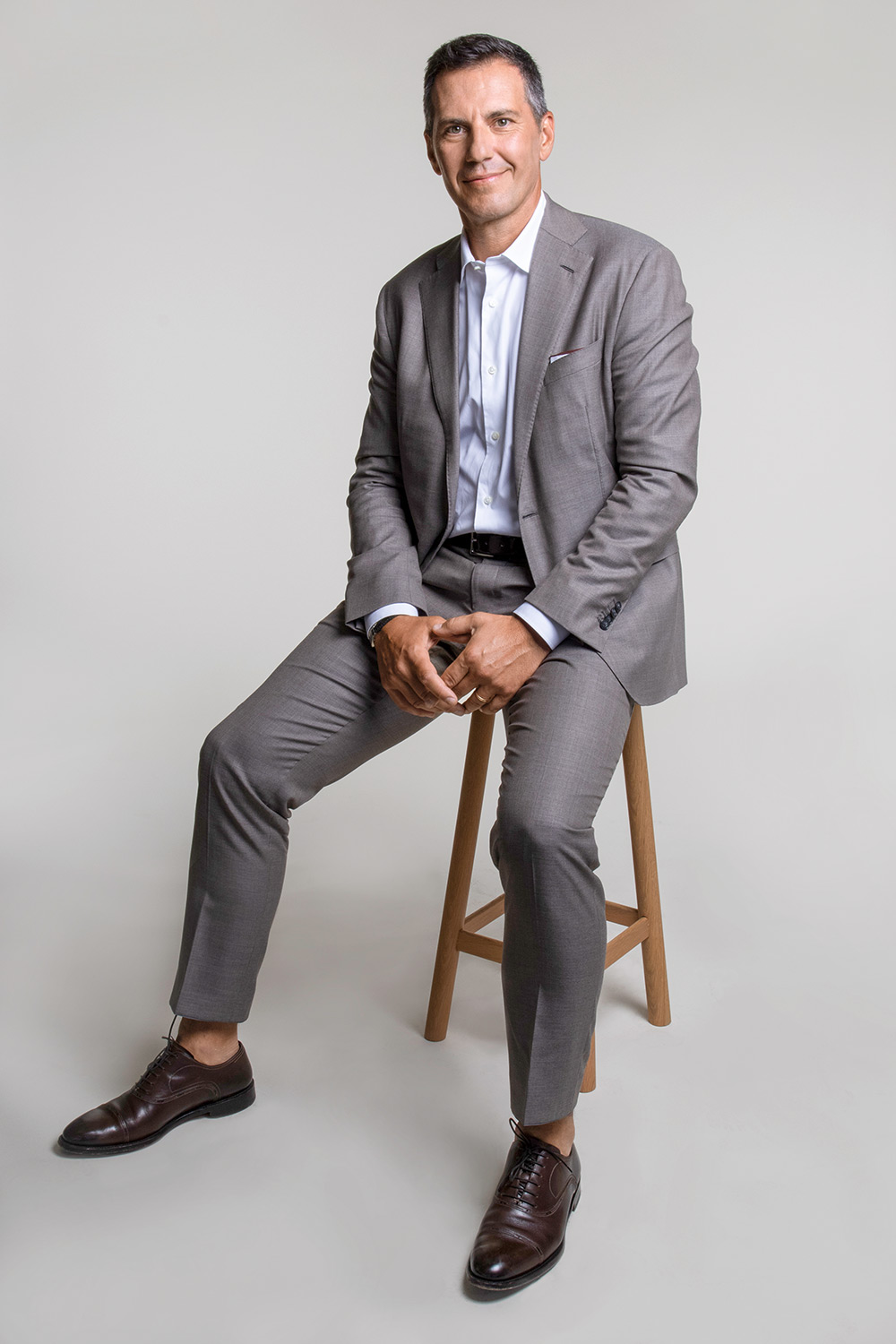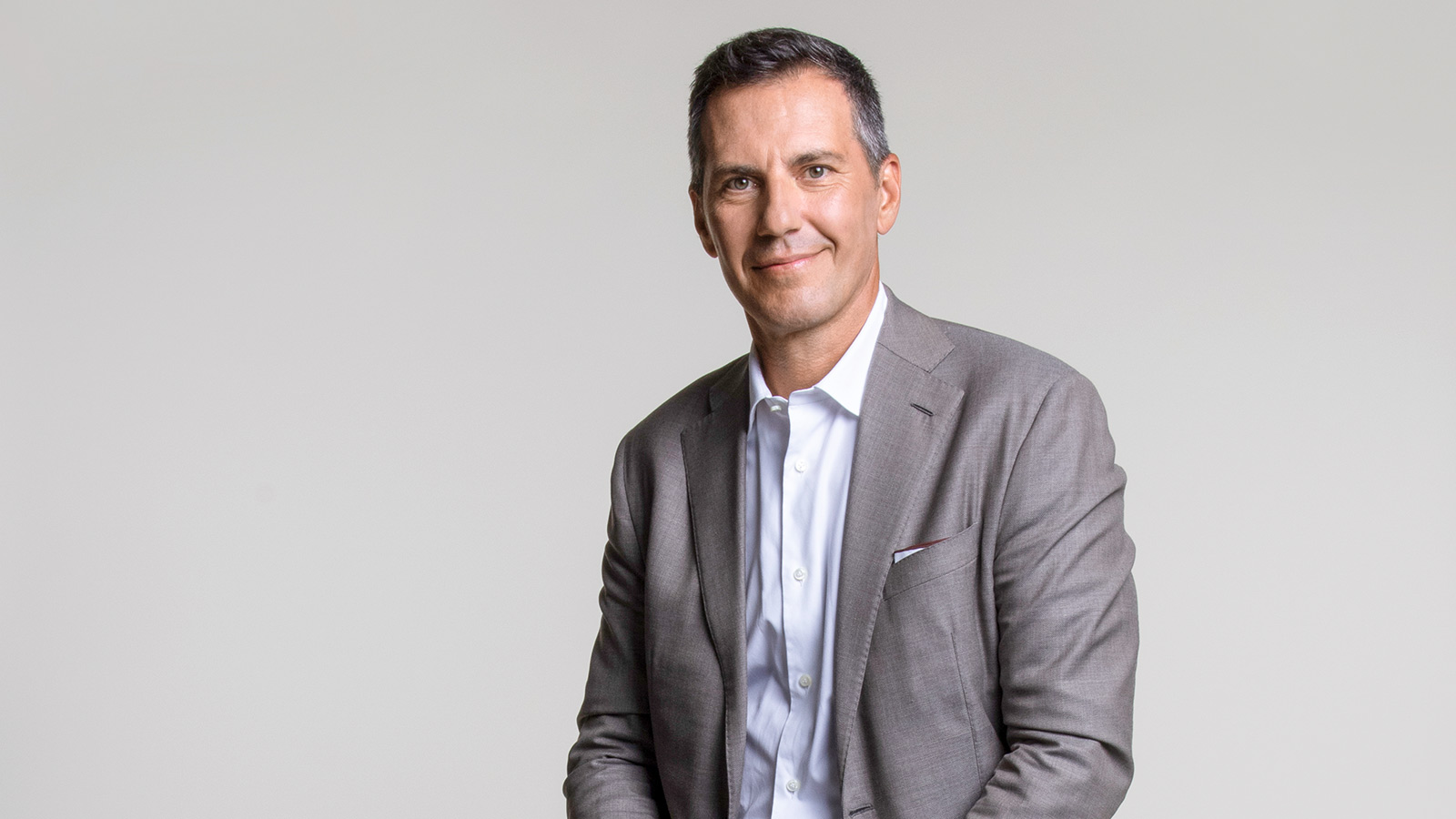Fashion and trends are Paolo Pitton’s bread and butter. The Co-CEO of Bongénie Grieder sits on 131 years of traditional history and continues to write the fashion fairytale with an eager pen. In this interview, Pitton reveals just how glamorous the daily business on the fashion throne really is and what hurdles he has to overcome every day on the prêt-à-porter race track.
Photos: © Bongénie Grieder
FACES: How do you personally define the term luxury?
Paolo Pitton: Luxury is a magical mix of beauty combined with the feeling of doing something good for yourself and rewarding yourself. Product, quality and service are combined to create a very personal luxury experience.
F: You are co-CEO of Bongénie Grieder, one of Switzerland’s best-known fashion houses, and sell fashion from today’s hottest labels in prominent locations. How glamorous is your job and your day-to-day business?
PP: It’s a great job, but it has nothing to do with the glamor that you might imagine. Everything I do or think about every day, I do with the one goal of making people even happier – and that’s a great feeling.
F: There are bound to be numerous hurdles and stumbling blocks in the way of achieving this goal. What problems do you normally have to deal with in your day-to-day work?
PP: I’m probably like most of us in that I have to think every day about what our industry will look like in the future. I can only make the right decisions and head in the right direction together with my team if I think about these things. At the same time, we must not forget the present and must always keep an eye on the here and now so that we can make our customers happy.
F: Bongénie Grieder was founded in 1891, which is now 131 years ago – a great legacy! How much respect do you have for this heritage and for preserving existing traditions while moving into the future with new ideas?
PP: I have great respect for that, and I am also aware that we are judged in the present for what we do on a daily basis and not for the achievements of our predecessors.
F: How do you explain Bongénie Grieder to someone who doesn’t know the company?
PP: If you don’t know Bongénie Grieder, I’d invite you to join us first! Our branches are located in numerous cities in Switzerland, from Geneva to Lausanne, Basel, Bern and Lucerne. In Zurich, we are currently still located on Paradeplatz in the middle of Bahnhofstrasse, but we will be moving to another location in 2024. All our stores have their very own character – just like the people who visit us and shop with us. We work with individual colors and create a very personal architecture. No two stores are the same – this is where we differ significantly from international brands whose stores look the same all over the world. However, all our stores have one thing in common: the warmth, the passion of our employees and their extensive knowledge of fashion trends.
F: The fashion industry is constantly changing and new brands are constantly coming onto the market. How does Bongénie Grieder decide which ones to include in the range?
PP: There are no rules when selecting our brands; we look for the magic, that certain something that convinces us. Of course, there is a lot of passion behind every new brand – and you need it if you want to make it in the fashion industry. This is important to us, but we also pay attention to above-average design and the quality of the collections and individual items.
“Everything I do or think about every day, I do with the aim of making people even happier.”
F: Today, everyone has the opportunity to shop online 24/7 and compare prices on the Internet. How do you get your customers to choose Bongénie Grieder?
PP: In my opinion, the prices are not a problem. The customer can choose when and where he or she wants to store – even with us. We therefore offer our expertise not only offline in our stores, but also 24/7 online at bongenie-grieder.ch.
F: How do you convince your customers to store offline in one of Bongénie Grieder’s stores?
PP: Shopping on site is a completely different experience. Blink once and you’ll have missed hundreds of styles while scrolling online, which you can take your time to look at while browsing in store. Our team will also help you to find your own style and create looks that suit you and your preferences.
F: Bongénie Grieder is an institution on Zurich’s Bahnhofstrasse. How important is this location to you?
PP : Bahnhofstrasse in Zurich has been the home of Bongénie Grieder for 130 years. I don’t know of any other store that has been there for so long. Bongénie Grieder laid the foundation stone for this street – and all the other brands followed.
F: You have already mentioned that you will be moving to a new location with Bongénie Grieder in 2024. What can you tell us about this?
PP: We are really looking forward to this step – a new house, everything completely fresh. At the end of 2024, we will open our new store at Bahnhofstrasse 3 in Zurich, directly opposite Bürkliplatz. It will be a mix of tradition and innovation, just as we have always done.
F: What is the biggest challenge currently facing the retail industry?
PP: We all face the same problem of finding staff who are passionate about working in the store and dealing with customers.
F: Fast fashion brands such as Shein are making particularly large profits and are becoming increasingly popular. How do you rate this rise?
PP: Fast fashion targets the price in order to put competitors out of the race and cause them to stumble. There is always someone who does it even better than his predecessor. As far as their segment is concerned, those responsible around Shein have done a good job.
F: Which price is too high and which is too low for a T-shirt?
PP: That’s a personal decision that everyone has to make for themselves – like everything that has to do with emotions.
F: Can fashion and consumption ever be sustainable?
PP: We must all make an effort to improve our living space and take care of our planet. My personal wish would be for fashion to return to natural materials.
F: The world is spinning fast, the fashion carousel even faster. What has changed the most in the industry in recent years?
PP : Quite clearly: the role of social media. This raises completely new questions, such as: Who influences whom today? Or: Which advice should we really follow, which should we trust? A lot has already changed in this respect.
F: What development in the fashion industry makes you personally particularly thoughtful?
PP: That more and more traditional brands are falling into the hands of a few industrial groups. For this reason, young designers may be tempted to work for existing brands instead of starting something themselves. They conform to existing ideas and try to fit in – but it would be all the more desirable to let them dream of their own company.
F: What do you think the fashion industry should look like in the future?
PP: It should be more concentrated, but also much more democratic. I dream of fashion being available and accessible to more and more people so that we can reduce or even break down cultural barriers. It is particularly important to increase respect for diversity and our planet – I am particularly hopeful in this regard.
F: Is virtual fashion serious competition for regular fashion collections?
PP: It’s still too early to say for sure. NFT items could well end up in our future shopping carts: We could dress in reality and buy NFT fashion at the same time to carry on and express our personality in the metaverse as well.
F: Are there differences between young and older fashionistas?
PP: I don’t think so. We all shop to please ourselves. Every person has different needs, which change depending on the episode in their life – this leads to very different consumer behavior between individuals. In my opinion, age is rather irrelevant.
F: How would you describe the typical Swiss fashion consumer?
PP: Smart and educated and therefore not so different from any other consumer in other parts of the world.
F: How does Switzerland react to fashion and trends in an international comparison?
PP: Switzerland exudes a very traditional image to the outside world. Nevertheless, people here are very open to diversity and new forms of expression such as art. Fashion and trends are picked up particularly quickly by individual niches, although it then takes a little time for the masses to get involved.
F: Will you tell us your fashion secret?
PP: Don’t be afraid of being overdressed.










